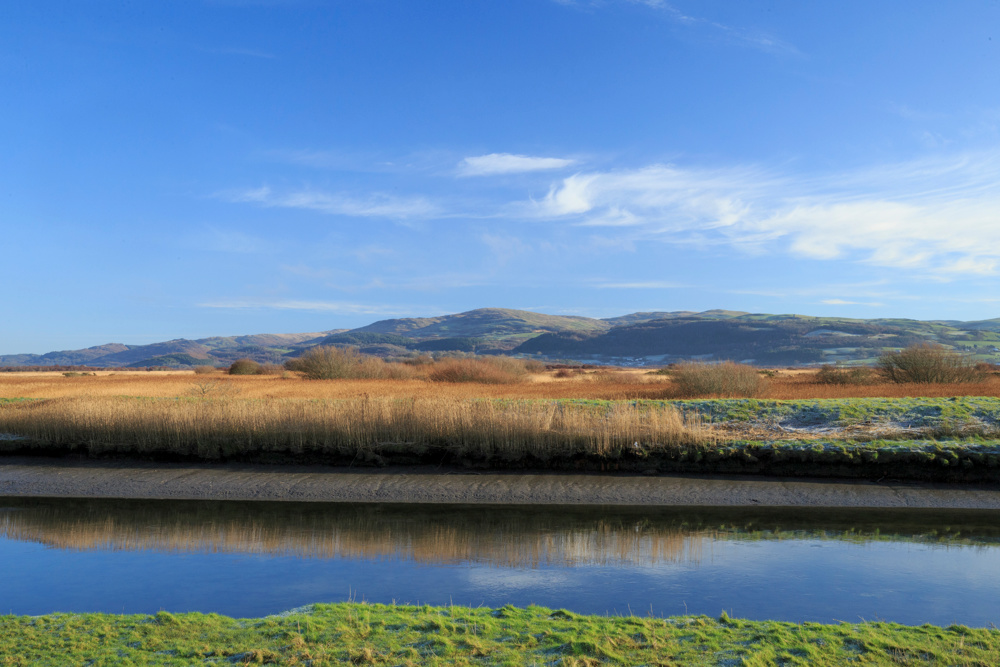The vast expanse of the Cors Fochno wetland nature reserve is a major natural feature of the area, as are the sandunes of Ynyslas and the nearby submerged forest. The small hills that rise from the flat plain all have ‘Ynys’ (‘island’) in their names, an indication that they once stood above wetlands.
Ynyslas - sandunes and saltmarsh
The sandunes of Ynyslas are the the largest in Ceredigion but they are easy to explore along a network of boardwalks that extend through the dunes. The dunes are continuously moulded by sea breezes and currents. As well as marram grass and sea bindweed, the dunes are well known for orchids and marsh helleborine and pyramid and bee orchids in the drier areas. The dunes are also home to rare liverworts and fungi, insects and reptiles. Skylark, linnet and stonechat nest in the dunes whilst ringed plovers make their nests on pebbly parts of the beach. The large wooden sculpture of a banded snail near the Ynyslas Visitor Centre is a great place to get a good view of the site.
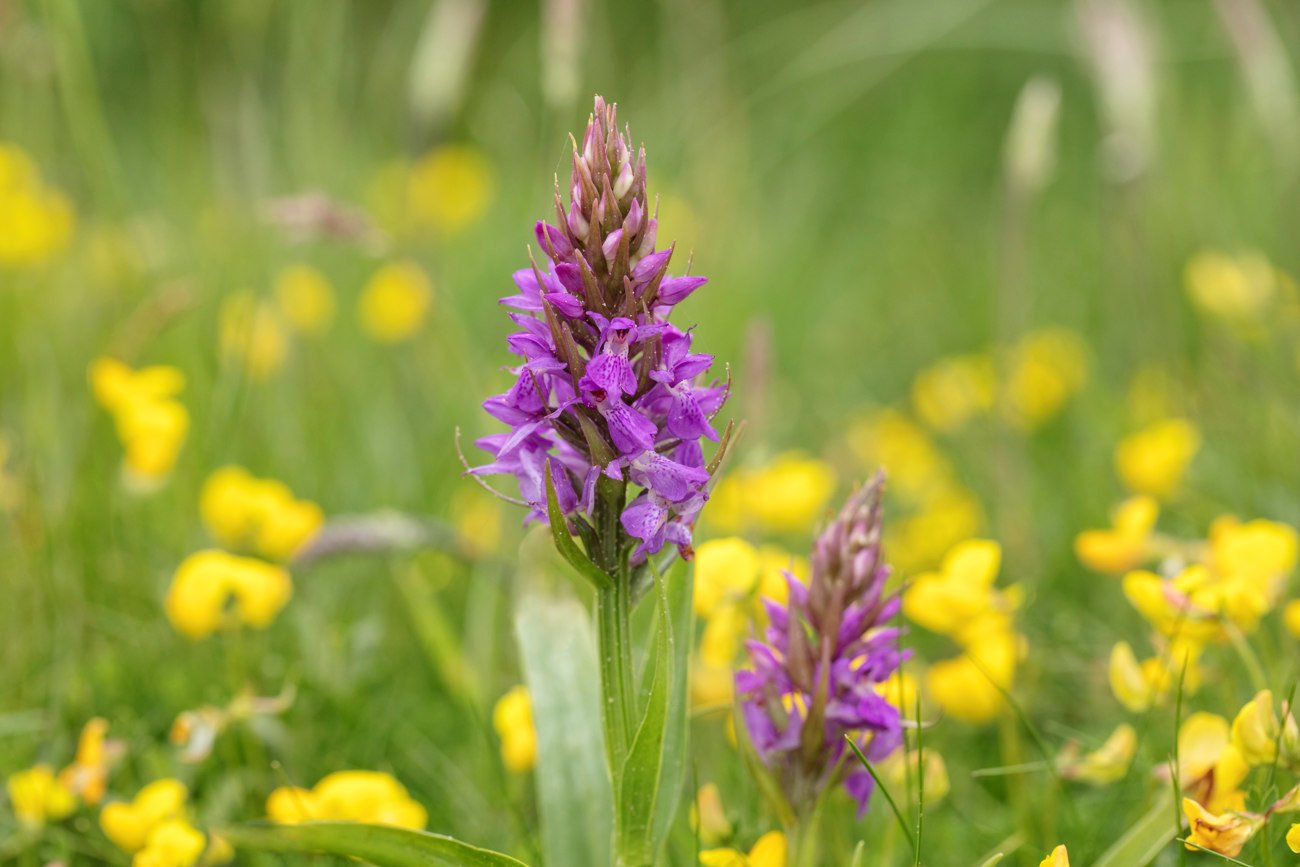
The largest area of saltmarsh in Ceredigion lies along the Dyfi estuary at Ynyslas and Ynyshir. 'Ynys' means 'island', here coupled with the words 'glas' meaning green or fertile, and 'hir' meaning long. The names clearly indicate that some of the land is often covered by water - both salty and fresh. The saltmarshes are awash with sea pink in spring, whilst marsh samphire and sea aster can also be seen in summer.
Cors Fochno - an unusual National Nature Reserve
Cors Fochno (or' Borth Bog') is one of the largest and finest examples of a raised peat bog that remain in lowland Britain. The land was once - more than 5,000 years ago - covered by forest, but as sea levels rose, the forest was replaced by reed swamp and then peat bog. The bog’s surface today is dominated by a tapestry of gold and red sphagnum mosses, and is the habitat of many rare and unusual species including insect eating plants like sundews, the rosy marsh moth and small red damselfly.
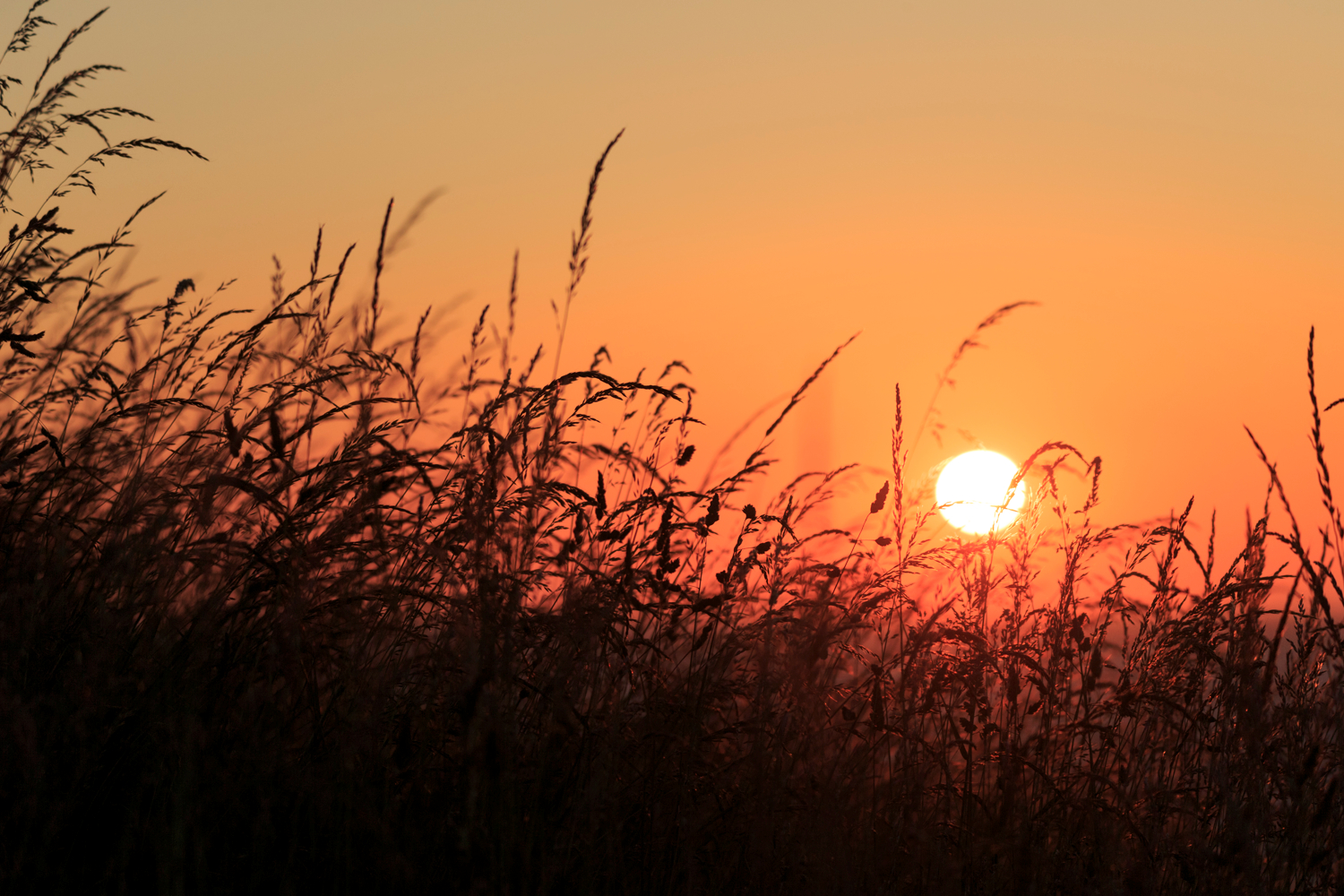
The deep, watery peat of Cors Fochno is a treacherous environment. According to legend it was the realm of the scrawny, seven foot ‘Hen Wrach’ (Old Witch) who, if she visited you in your bed at night, would cause you to wake with the shakes. A long, deep fire was the only way to be rid of her.
It's possible to visit with a guided walk from the Ynyslas Nature Reserve Visitor Centre, or follow the circular boardwalk route around the edge of the bog. The Wales Coast Path runs along the southern and eastern fringe of the bog between Borth and Tre Taliesin.
The legendary sunken forest of Cardigan Bay
At low tide, the sea retreats from the sands between Borth and Ynyslas to reveal the remains of an ancient sunken forest, which, along with the rampart-like pebble ridges of the 'sarnau' out to sea along the Cardigan Bay coast, gave rise to the legend of the lost land of Cantre'r Gwaelod.
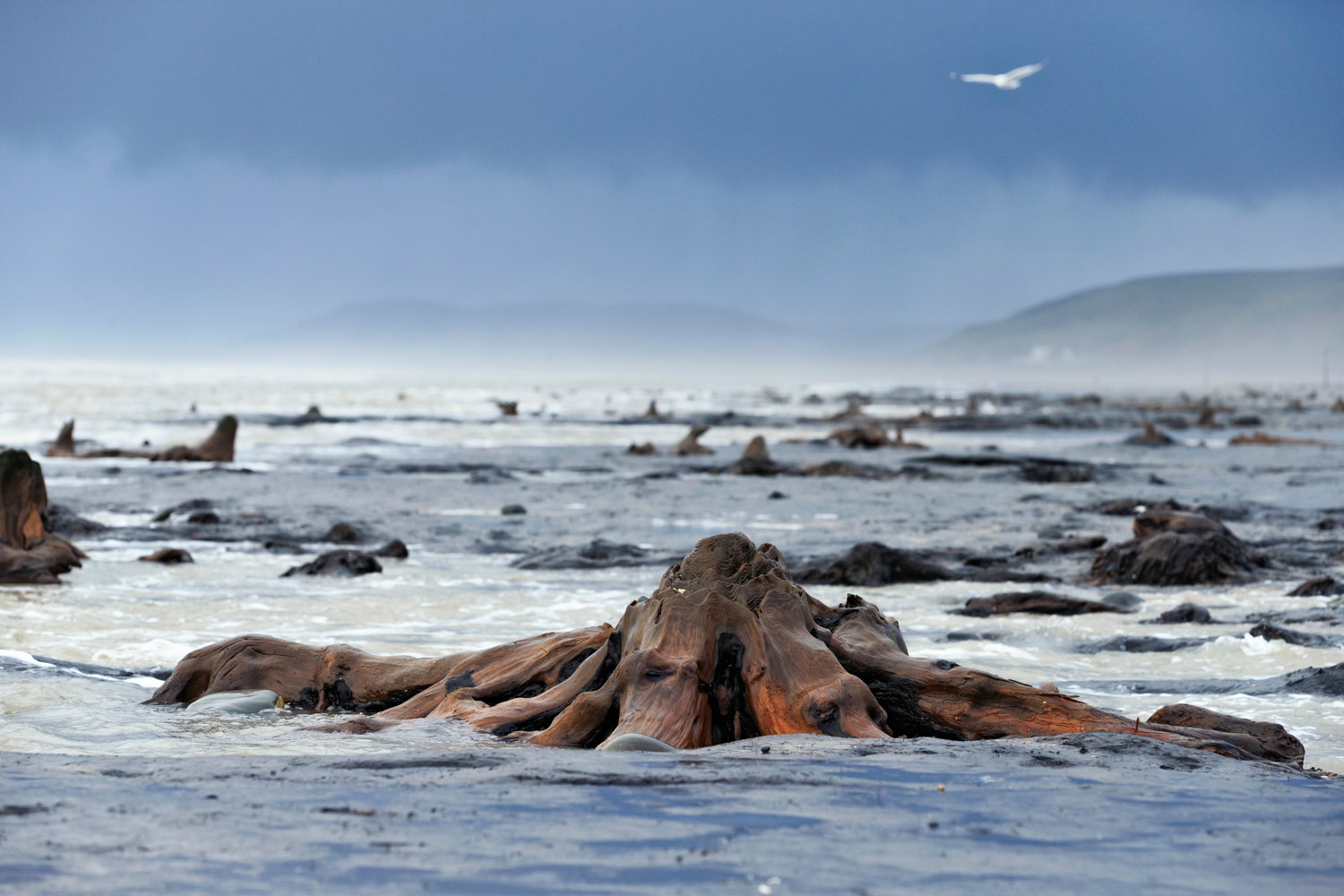
The Dyfi Estuary and Ynyshir - a haven for birds
The RSPB reserve at Ynyshir is host to migrant flocks of Manx Shearwaters in late summer, and in winter, Greenland white fronted geese - the only site in England and Wales they visit. There are trails and a boardwalk across the reserve leading to seven hides. Visit the RSPB Ynyshir reserve on the Dyfi estuary at any time of year - The BBC Springwatch team spent two exciting spring seasons at the reserve in 2012/13 -to spot woodland birds as well as migrating birds and estuarine waders. oThe wet grasslands of the reserve are a great place for spotting lapwings, redshank and other waders.
Nearby is the Dyfi Osprey Observatory -where you can watch the nest and the comings and goings of the magnificent 'sea eagles' nest.
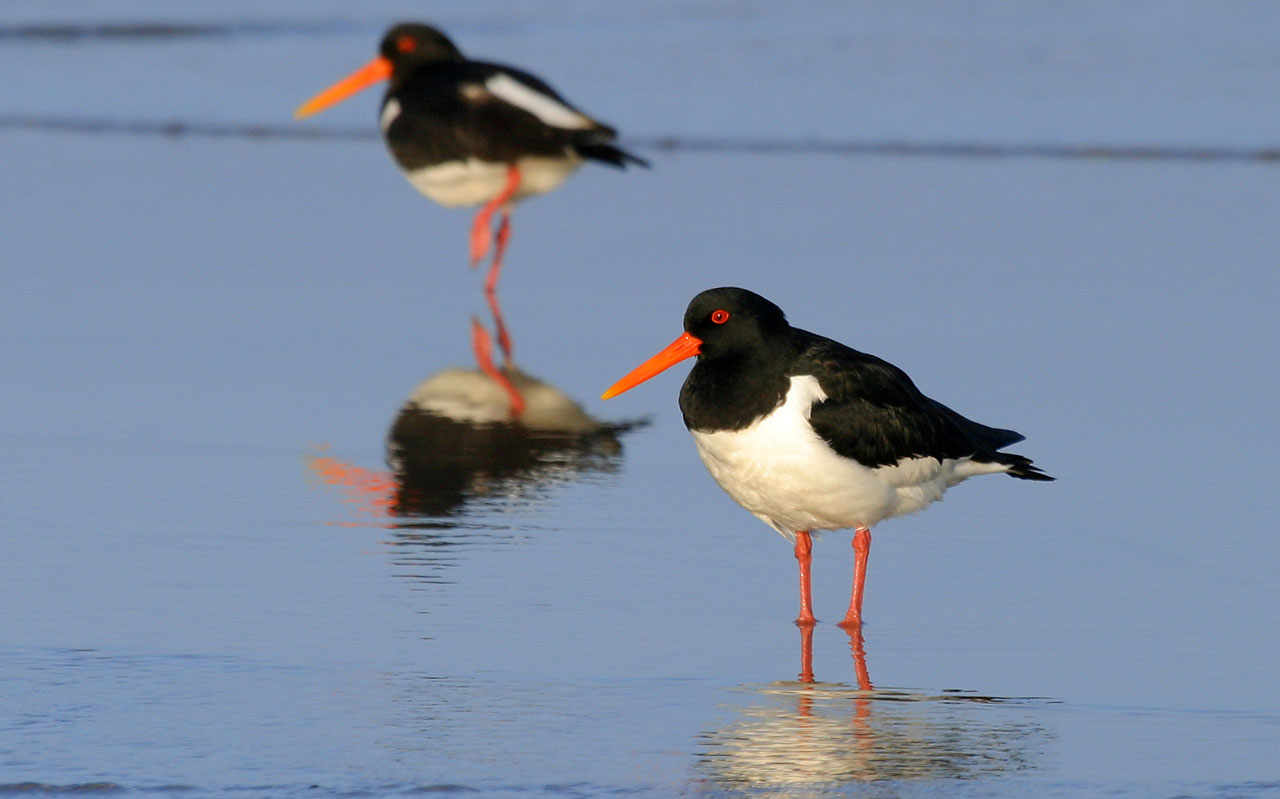
The Dyfi's tributaries: Leri, Einion and Cletwr
Tributaries of the Dyfi include the Einion, Cletwr and Leri rivers, and these short rivers in the north of Ceredigion are a perfect introduction to the diverse landscape and history of Ceredigion.
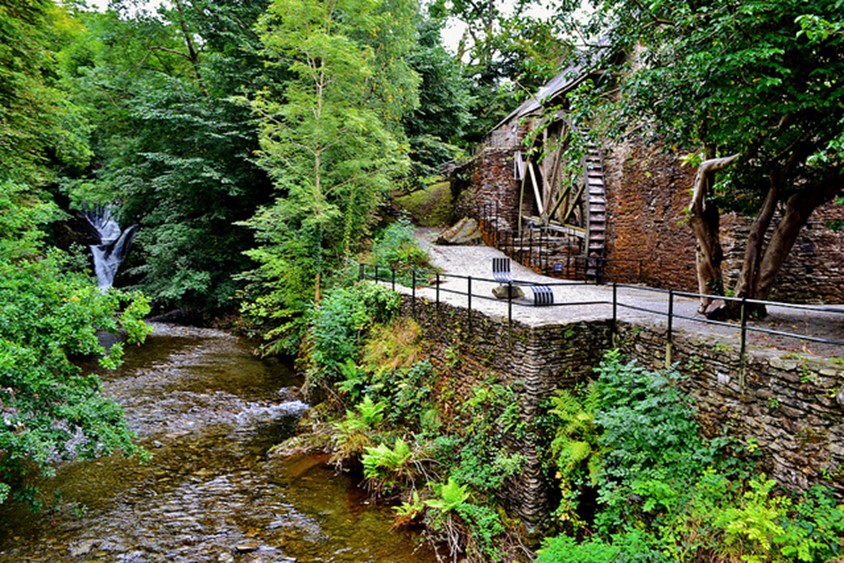
The journey of the River Einion to the sea takes it over rapids in a wooded valley, known since Victorian times as Artists Valley. Along its short course the river gathers enough power to drive a large waterwheel for the 18th century mill at the Dyfi Furnace, which recalls the mining heritage of the area, as well as an attractive waterfall cascade. The site is part of a Wildlife Trust nature reserve and testament to how nature and industry can coexist in harmony. The Einion then gets calmer across the floodplain and forms some of the best wetland habitats for migrating birds in the UK at the RSPB Ynys Hir reserve.
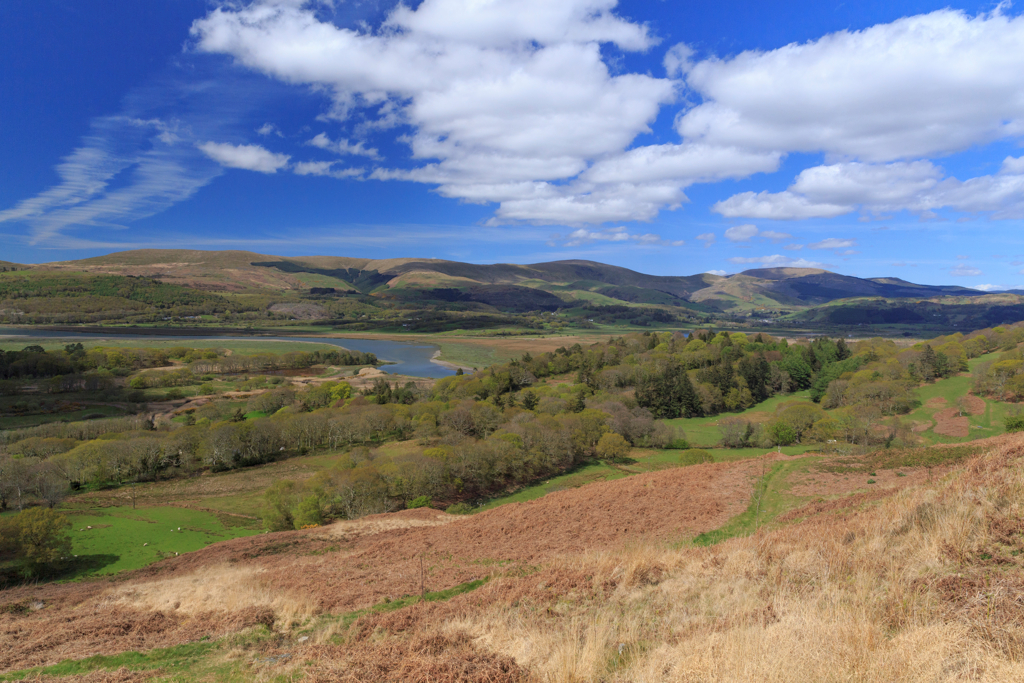
The pretty Cletwr passes through Cwm Cletwr nature reserve - a sheltered wooded valley full of ferns and lichens. On the valley slope above the village of Tre’r Ddol lies an ancient cairn associated with Taliesin, the legendary shapeshifter, Elffin and Ceridwen.
Afon Leri also rises from the mossy bogs of the Cambrian Mountains, in the shadow of Disgwylfa Fawr. Below the dam of Llyn Craig-y-Pistyll, (the lake of the waterfall rock) it tumbles over a dam and a waterfall before continuing through wooded valleys. The river is full of life with dippers, otters and plenty of fish. At Talybont where the Leri is joined by the Ceulan, the combined power of the rivers turned wool and mineral mills.
In spite of the natural settings of the Leri's source and her estuary, both are engineered places. The last stretch runs in a straight line behind the village of Borth towards the estuary of the Dyfi at Traeth Maelgwyn.
